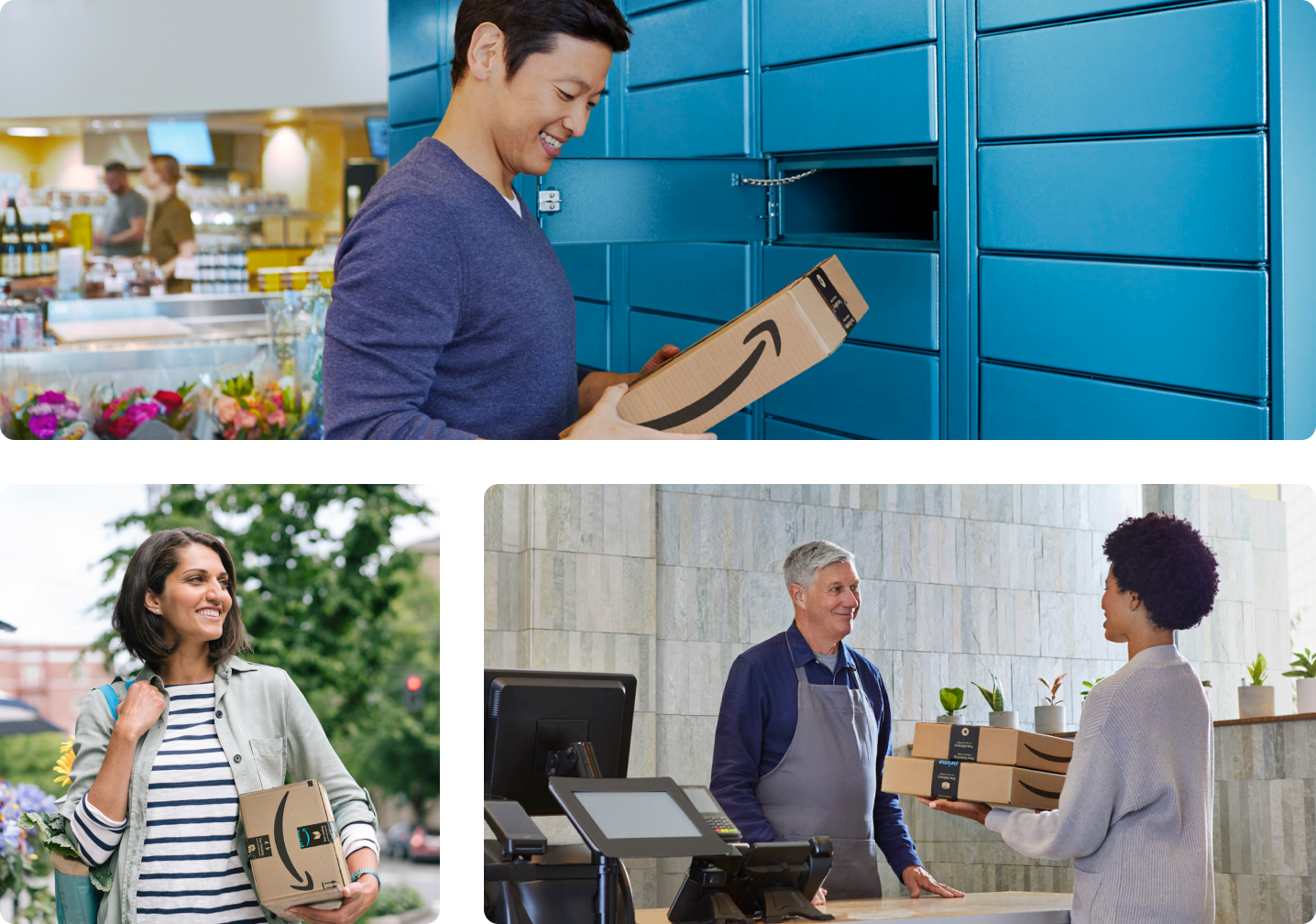Amazon: Pickup Orders
PROJECT OVERVIEW
Home delivery from Amazon is simple. A few clicks and a package arrives at your door. However, sometimes home delivery is not the best option — or worse, no option.
How might we ... make pickup so simple and delightful it’s worth the hassle of putting on pants?
Home delivery from Amazon is simple. A few clicks and a package arrives at your door. However, sometimes home delivery is not the best option — or worse, no option.
How might we ... make pickup so simple and delightful it’s worth the hassle of putting on pants?
MY IMPACT
*OPS: units sold x $$$ of units sold
*GCCP: profit after fixed costs
- My designs increased Pickup orders by +4% (10.6M packages)
- Order Product Sales +$61M Desktop, +$24M Mobile
- +$7M GCCP in EU-5
*OPS: units sold x $$$ of units sold
*GCCP: profit after fixed costs
Why Amazon Pickup?
Today, Amazon serves a total of 310M customers in 50 countries amounting to 7.7 billion packages delivered. Customers choose Pickup because:
- high-theft area (San Francisco)
- laws that limit delivery (Europe)
- no credit card (India)
- they live in an apartment (urban)
- pickup is faster or more affordable
Today, Amazon Pickup serves 20M customers (6% overall), with 295K active pickup locations, delivering 267M packages in 20 markets around the globe — including: US, Europe, India, Mexico, and Japan.
The Challenge
3.8M Pickup customers (20%) leave their cart when attempting to select a pickup location, not to return. This impacts customer experience and limits throughput numbers [~51M].
We believe that ... customers are overwhelmed by Pickup options at checkout and need guidance from Amazon.
We believe that ... removing friction will increase Pickup package volume by +6.4%.

Success Measures
Primary
- 1% users select pickup as the delivery address on checkout
- Hub order positive on Chewbaca
Secondary
- GCCP results
- Overall checkout conversion
- Overall latency
- Prime sign-up impact
What I Did
DISCOVERY ︎ DEFINITION ︎ DESIGN ︎ DEVELOP ︎ GO TO MARKET
DISCOVERY
Strong business results start with people. This means knowing target customer(s), their jobs to be done, key market segments and the team bringing this challenge to life.
Target Customer & Archetypes
I defined our core customers (based on previous research), ensuring decisions were built on a foundation of data.

Sam the Secure
Sam is a prime-member, happy with home delivery. He’s loyal to home but needs to purchase an expensive item and wants to see how pickup relates to home delivery.
“If Pickup is faster and more secure than delivery — I’ll do it.”
Goal: increase Sam by +0.53%.
Sam is a prime-member, happy with home delivery. He’s loyal to home but needs to purchase an expensive item and wants to see how pickup relates to home delivery.
“If Pickup is faster and more secure than delivery — I’ll do it.”
Goal: increase Sam by +0.53%.
Christy the Couponer
Christy is a non-prime customer, who can’t justify the $139/yr fee just for convenience. Christy does whatever it takes to save money.
“I will drive 10 mi so my kids eat free.”
Goal:
Christy is a non-prime customer, who can’t justify the $139/yr fee just for convenience. Christy does whatever it takes to save money.
“I will drive 10 mi so my kids eat free.”
Goal:
-
increase Christy by +5.35%
- convert Christy to prime-member
Stakeholder Interviews
Understanding who will help you deliver value is just as important as knowing your target customer(s).
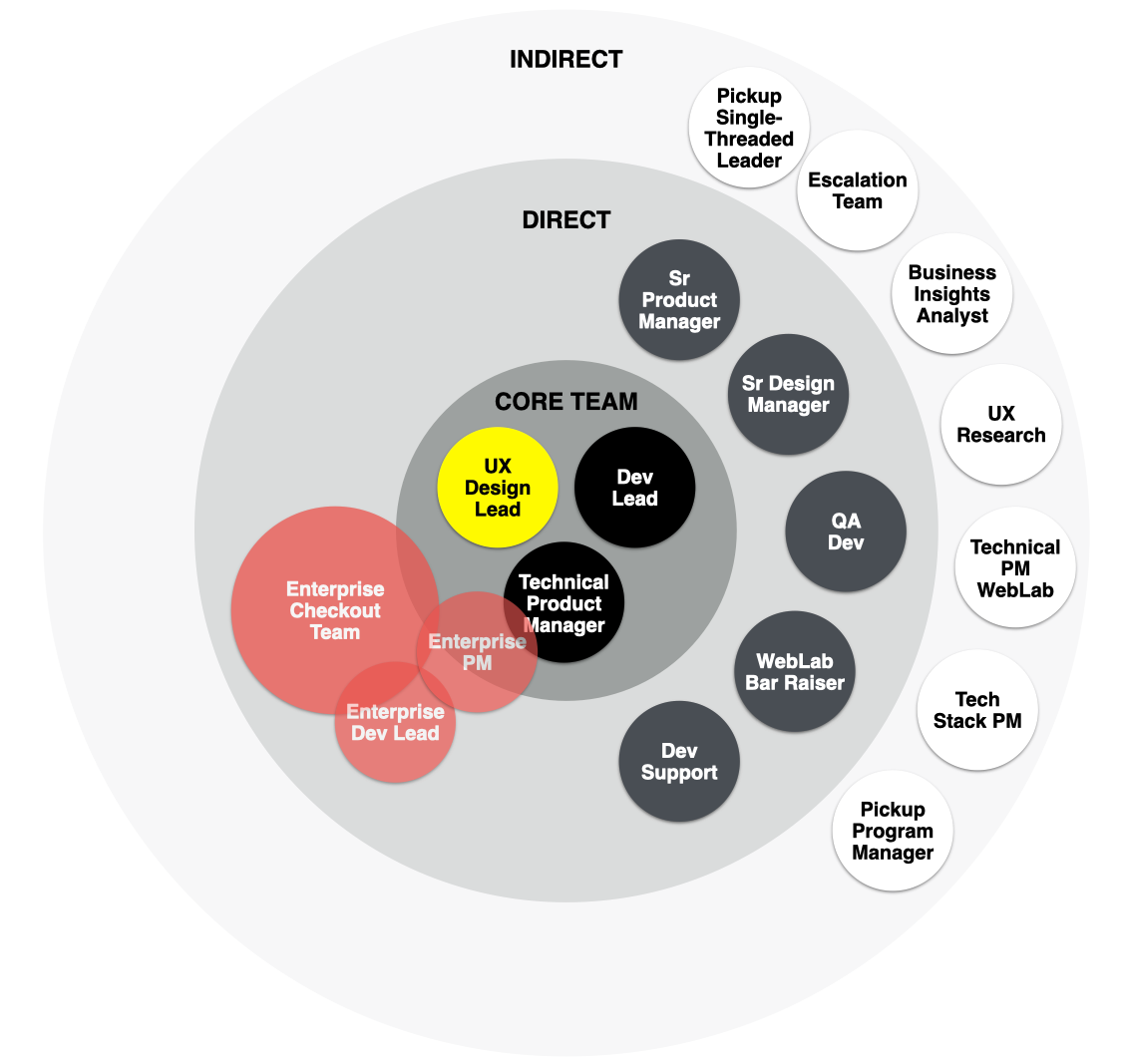
STAKEHOLDER INTERVIEWS
TPM: “This includes a larger rollout of a tech stack impacting our bottom line. If we miss P1 that’s not good.”
Enterprise Checkout: “We have 700+ feature requests a year, so I can’t help you sketch out the problem.”
QA Dev: “There are 40+ use cases to consider when rolling this feature out — ex: mixed cart sizes.”
Enterprise PM: “We have to be very delicate how we impact the cart and checkout experience”.
CART: Eachweek, 98M (YoY: +21%) customers WW place 180M (YoY: +30%) orders through Cart — $8.9B in OPS (YoY: 32%, 74% OPS share). In Jan-Jul ‘21 Cart was served 240M (Yoy: +30%) times daily.
CHECKOUT: In the first 34 weeks of 2021, checkout facilitated over 236.1M orders. (YoY: +27.2%) and $11.3B in OPS (YoY: +29.2%) WW each 15 week.
TPM: “This includes a larger rollout of a tech stack impacting our bottom line. If we miss P1 that’s not good.”
Enterprise Checkout: “We have 700+ feature requests a year, so I can’t help you sketch out the problem.”
QA Dev: “There are 40+ use cases to consider when rolling this feature out — ex: mixed cart sizes.”
Enterprise PM: “We have to be very delicate how we impact the cart and checkout experience”.
CART: Eachweek, 98M (YoY: +21%) customers WW place 180M (YoY: +30%) orders through Cart — $8.9B in OPS (YoY: 32%, 74% OPS share). In Jan-Jul ‘21 Cart was served 240M (Yoy: +30%) times daily.
CHECKOUT: In the first 34 weeks of 2021, checkout facilitated over 236.1M orders. (YoY: +27.2%) and $11.3B in OPS (YoY: +29.2%) WW each 15 week.
Key Market Segments
Scaling to Prime & Non-Prime. Locker+ has a pickup option, so we are now scaling to all customers, across all devices and marketplaces.
Launch in US ︎ Italy ︎ Spain. Starting with 10% of US locations on mobile and desktop first, our team could monitor GCCP, fix bugs, and make small UX improvements.
When Pickup is Better Than Deliver. We will intelligently show pickup only when it is a faster & cheaper solution to delivery.
DEFINE
I used a number of design thinking methods to ‘zoom-out’ on the challenge, and ‘zoom-in’ to define the details.
Customer Journey Map
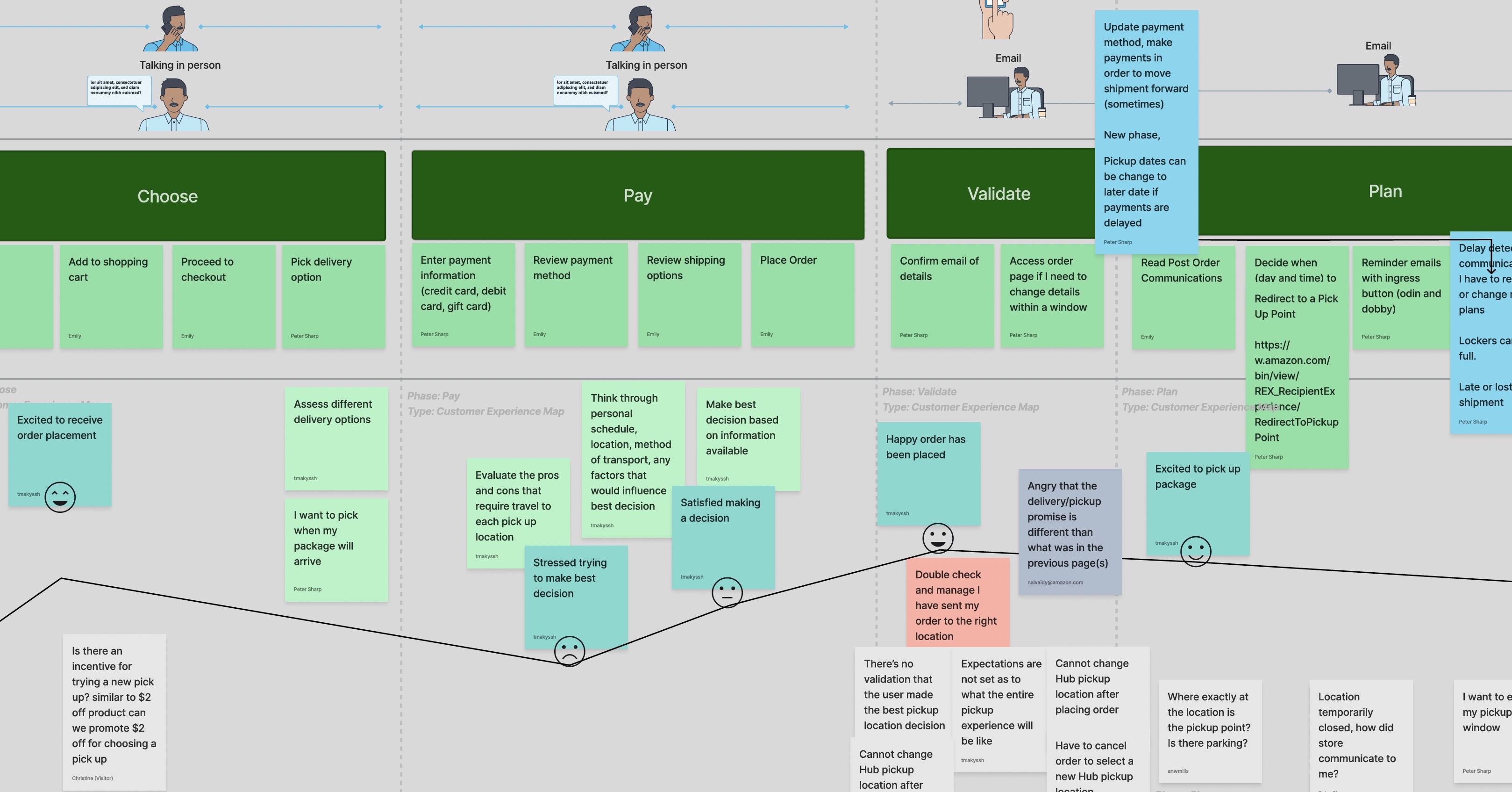
User Flow
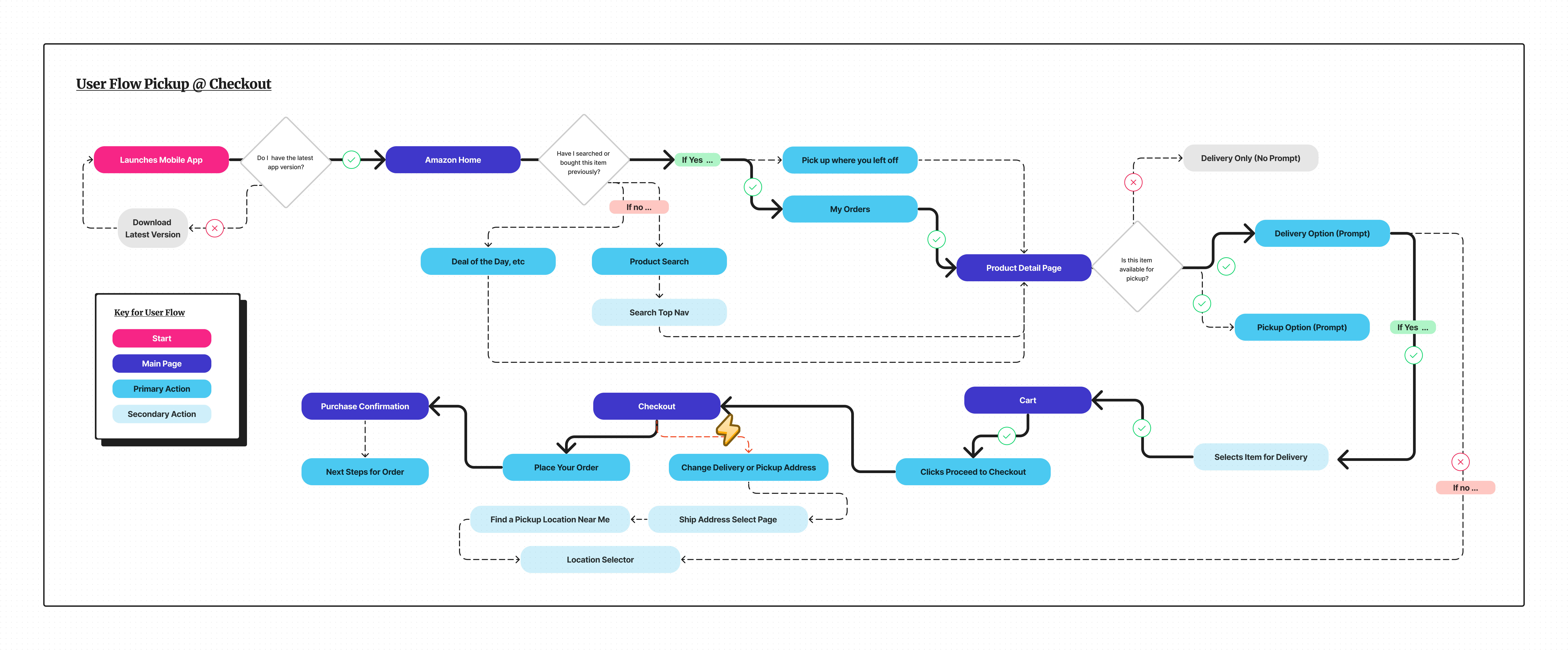
Low-Fidelity Sketches

DESIGN
You can’t design in a vacuum. Our team had to consider customer needs, business contraints, a new tech stack and fit the Enterprise Checkout standards.
Design Principles @ Checkout
You can’t design in a vacuum. Our team had to consider customer needs, business contraints, a new tech stack and fit the Enterprise Checkout standards.
Design Principles @ Checkout
Simplicity
Checkout should be simple, straightforward and easy to complete a purchase without friction.
Checkout should be simple, straightforward and easy to complete a purchase without friction.
Clarity of Signposts
Checkout should be concise, with clear calls to action and labeling of each step in the process.
Checkout should be concise, with clear calls to action and labeling of each step in the process.
User Control
Give customers control allowing them to choose the options that work best for them.
Give customers control allowing them to choose the options that work best for them.
Persistence
Checkout is designed to remember users' information from previous transactions, so they can complete purchases efficiently in the future.
Checkout is designed to remember users' information from previous transactions, so they can complete purchases efficiently in the future.
Speed and Performance on Mobile
Checkout is designed to be fast, with minimal load times and streamlined to complete a purchase.
Checkout is designed to be fast, with minimal load times and streamlined to complete a purchase.
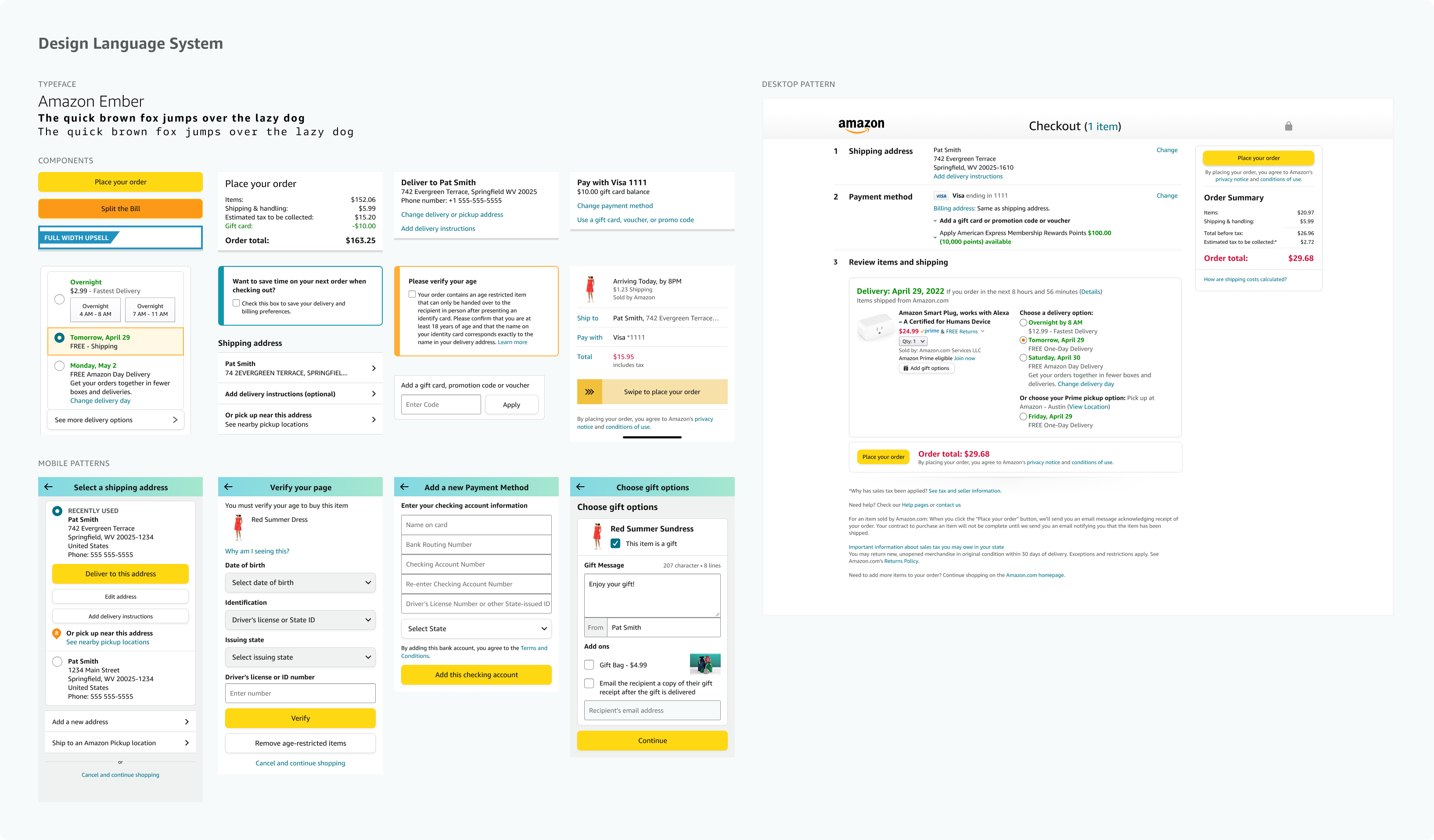
Hi-Fidelity Designs (Phase 1)
Our product team needed to release in phases due to a new tech stack ‘Chewbaca’ being released over 2021 - 2023 that would provide customers a simplified checkout.
I would need to explore dozens of options and then WebLab two treatments to see how well they performed against the current control.
![]()
Our product team needed to release in phases due to a new tech stack ‘Chewbaca’ being released over 2021 - 2023 that would provide customers a simplified checkout.
I would need to explore dozens of options and then WebLab two treatments to see how well they performed against the current control.


Hi-Fidelity Designs (Phase 2)
Through my exploration, we came to know the real problem to solve. P1 was the real goal — and Hub will lose 14.8% of WW volumes if P0 wasn’t launched first.


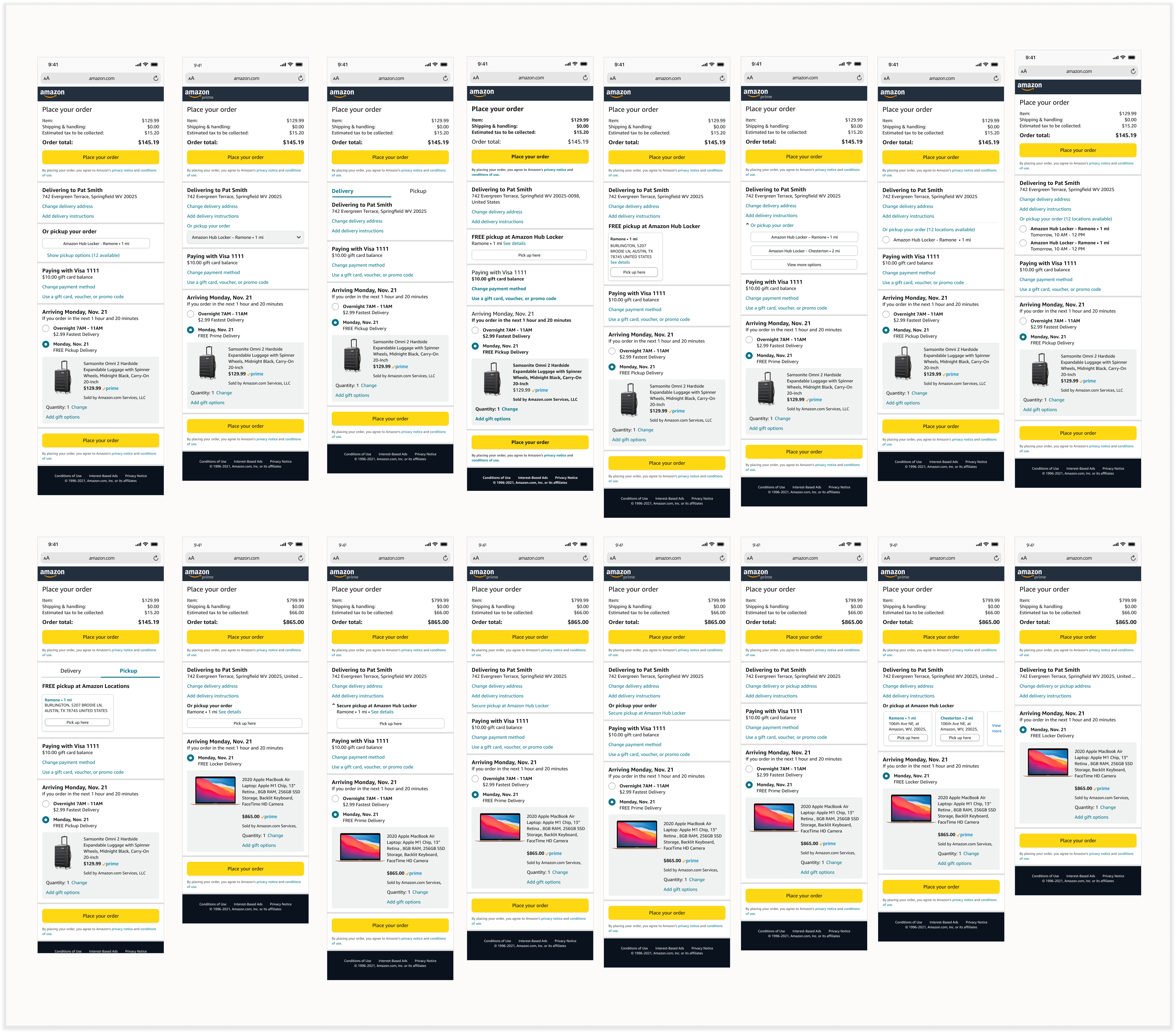


DEVELOPMENT & GO TO MARKET
Once I facilitated the opportunity using hi-fidelity sketches and user testing, it was time to convert pixels to the development roadmap, ensure QA was complete and results were closely monitored.
![]()
![]()
Once I facilitated the opportunity using hi-fidelity sketches and user testing, it was time to convert pixels to the development roadmap, ensure QA was complete and results were closely monitored.


Challenges Encountered
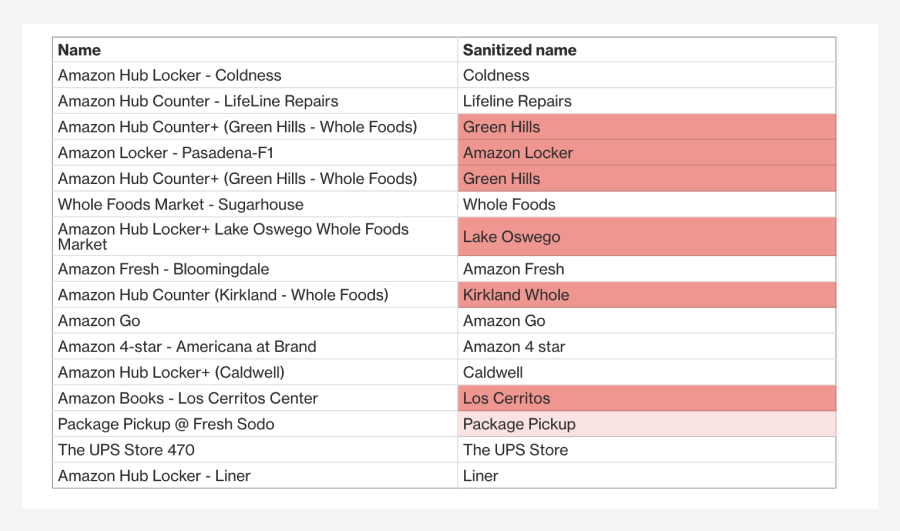
The data set on the back-end made for a complex display for the customer on the front-end. The team had to disagree and commit to launch a not-ideal customer experience.
 Collaboration was a challenge. I came into the project due some collaboration challenges between design and product that risked the top priority for 2022 delivering. As design lead I was able to regain healthy working relationship through open communication, quarterly planning and consistent backlog grooming.
Collaboration was a challenge. I came into the project due some collaboration challenges between design and product that risked the top priority for 2022 delivering. As design lead I was able to regain healthy working relationship through open communication, quarterly planning and consistent backlog grooming.“You really helped the team when we needed it. I told my manager there are no longer any deliverable risks and we are headed in the right direction." - Lead PM

Alignment with the enterprise checkout team microservice was a headache. The limited collaboration and long, slow queues required lots of documentation and asynchronous collaboration.
CFx Partners
- Product: Saptarshi Kiran
- Lead UX: Tim White
- UX: Andri Kumar
- Dev Lead: Amit Katal
- Thumbanil of North Star: Naim Rahman
